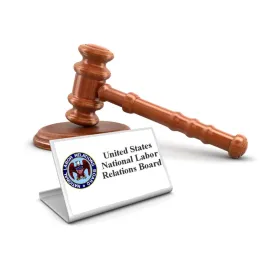On January 25, 2019, in a long-anticipated decision, the NLRB overturned another Obama-Board decision, FedEx Home Delivery, 361 NLRB 610 (2014), which modified the test for whether an individual is an “employee” or an independent contractor under the NLRA (read about that decision here). The Board, in a 3-1 decision (Chairman Ring and Members Kaplan and Emanuel joined the majority; Member McFerran dissented), rejected the standard established in 2014 that limited the import of an individual’s entrepreneurial opportunity for purposes of the independent contractor analysis and returned to the traditional common-law agency test.
This holding represents another decision that reverts Board law to long-standing precedent that predated the Obama administration and casts doubt on independent contractor decisions applying the FedEx test since 2014.
 Just a few short days later, on January 28, NLRB Chairman John Ring stated in an interview that the Board could provide greater clarity as to the independent contractor analysis by providing specific examples through the rulemaking process, and could also use rulemaking to tackle other hot button areas of federal labor law.
Just a few short days later, on January 28, NLRB Chairman John Ring stated in an interview that the Board could provide greater clarity as to the independent contractor analysis by providing specific examples through the rulemaking process, and could also use rulemaking to tackle other hot button areas of federal labor law.
SuperShuttle Holding
In SuperShuttle DFW Inc., 367 NLRB No. 75 (2019), the NLRB found that franchisees who operate shared-ride vans for SuperShuttle Dallas-Fort Worth are independent contractors, not “employees” covered under the NLRA. The Board affirmed the Acting Regional Director’s August 16, 2010 decision, in which she found that the franchisees were independent contractors based upon a traditional common-law agency analysis.
The Board overturned its earlier decision in FedEx Home Delivery, holding that FedEx impermissibly altered the traditional common-law agency test and long-standing precedent by holding that entrepreneurial opportunity represented just “one aspect of a relevant factor that asks whether the evidence tends to show that the putative contractor is, in fact, rendering services as part of an independent business” – as opposed to “an ‘animating principle’ of the inquiry.” The Board reaffirmed the traditional common-law agency test that it had applied prior to FedEx.
Application of Common-Law Agency Independent-Contract Analysis in SuperShuttle
In applying the traditional common-law test, the Board noted that franchisees own (or lease) and thus control their vans; retain complete control over their daily work schedules and working conditions; and pay a monthly fee to the franchisor, while keeping all collected fares. The Board held that these facts provided franchisees with significant entrepreneurial opportunity and control over how much money they made each month.
The Board also noted that, by sharp contrast, SuperShuttle has little control over the franchisees’ performance while driving and that SuperShuttle’s compensation is unrelated to the franchisees’ collected fares. Finally, the Board found that the absence of supervision of franchisees and the understanding between the parties that franchisees are independent contractors (per the express language of the “Unit Franchise Agreements,” which provides in bold and capital letters that the franchisee is “NOT AN EMPLOYEE OF EITHER SUPERSHUTTLE OR THE CITY LICENSEE”) weighed significantly in favor of the franchisees’ status as independent contractors.
Impact of SuperShuttle Decision
The holding in SuperShuttle is noteworthy for several reasons.
-
First, in overruling FedEx, the Board rejected a decision that blurred the long-established lines between employees with NLRA rights, such as engaging in protected concerted activity and unionizing, and independent contractors who lack those rights. The Board, in SuperShuttle, indicated its desire to provide greater clarity to employers and workers alike on this issue, which has been recently emphasized by Chairman Ring.
-
Second, the Board overturned a holding that moved away from a common-law test, which put the Board’s jurisprudence at odds with other federal statutes, such as ERISA. Now, the standard under the NLRA falls more squarely in line with other federal laws.
-
Finally, given the D.C. Circuit’s focus on common-law principles in its recent decision in Browning-Ferris Industries of California, Inc. v. NLRB, Cases 16-1063 and 16-1064 (D.C. Cir. December 28, 2018), the SuperShuttle decision also indicates where the Board likely would come out on the joint-employer question if given the chance to handle it judicially, rather than through rulemaking.
Potential Rulemaking
Speaking of rulemaking, just a few days after the SuperShuttle decision, on January 28, 2019, NLRB Chairman Ring made a statement to Bloomberg Law, stating that the Board may propose a new regulation to further clarify whether an individual is an independent contractor or employee: “That’s the type of area where we could be able to clarify the law by using specific examples.” Examples would provide helpful guidance to employers, particularly given the fact-intensive nature of the independent contractor inquiry. Chairman Ring also expressed an interest in relying upon the rulemaking process to update other aspects of federal labor law in the future. So stay tuned!




 />i
/>i
